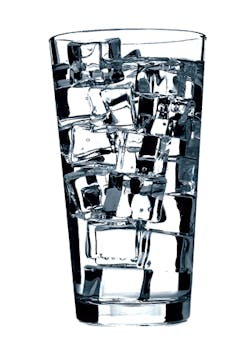Utilities Probe Challenge of Reducing Lead in Water
By Patrick Crow
In the wake of the Flint, Mich., emergency, water utilities are grappling with the daunting problem of lead service lines to homes.
The American Water Works Association (AWWA) sponsored a seminar on lead line replacement strategies during Drinking Water Week, an annual Washington, D.C., event focusing on water quality and supply issues.
“We are working diligently in educating water utilities and consumers about lead in drinking water,” said AWWA Chief Executive Officer David LaFrance. “It’s imperative to test and ensure lead service lines aren’t in the home, and if they are, to get them replaced quickly.
“The Flint crisis lays bare a simple fact: As long as there are lead pipes in the ground or lead plumbing in homes, some risk remains. As a society, we should seize this moment of increased awareness about lead risks to develop solutions for getting the lead out.”
Lead is rarely found in water supplied by treatment plants; it occurs from lead service lines and home plumbing. In most communities, some parts of the lead service lines are owned by the water utility and some parts by the customer.
The Environmental Protection Agency’s Lead and Copper Rule requires utilities to collect samples at homes thought to be at high risk for lead. The sample results are used to determine if the utility should adjust its water chemistry to protect against lead leaching into the water.
Last March AWWA estimated there are 6.1 million lead service lines serving 7 percent of the U.S. population and replacing them would cost $30 billion.
AWWA’s study said the number of lead service lines could be as high as 7.1 million or as low as 5.5 million. It said about 11,200 community water systems have at least some lead pipes in their service areas, with the largest concentration occurring in the Midwest.
“If the average cost of replacing each remaining lead service line is $5,000 - a reasonable estimate - the collective cost could easily top $30 billion,” LaFrance said. “This is in addition to $1 trillion needed over 25 years to repair and expand buried drinking water mains.”
At the Washington seminar, John Sullivan, chief engineer for the Boston Water and Sewer Commission, said his utility’s customers can search an online database to determine if their property has a lead service line. BWSC offers a credit of up to $2,000 and interest-free loans to 48 months for homeowners willing to remove the portions of lead pipes on private property.
The Greater Cincinnati Water Works has expanded its outreach efforts, said Director Cathy Bailey. It has sent letters to more than 20,000 customers and distributed pitcher filters to homes thought to be at high risk.
Reid Campbell, director of water services for Halifax Water in Nova Scotia, observed that many water customers are reluctant to spend money on replacing lines that are buried and out of sight.
The Lansing (Mich.) Board of Water and Light owns most of the lead service lines in its network. Randall Roost, principal planner of water operations, said that has enabled the utility to reduce lead service lines from 13,500 to 436 in 12 years. The $42 million cost was covered entirely through customer rates.
About the Author: Patrick Crow covered the U.S. Congress and federal agencies for 21 years as a reporter for industry magazines. He has reported on water issues for the past 15 years. Crow is now an Austin, Texas-based freelance writer.

